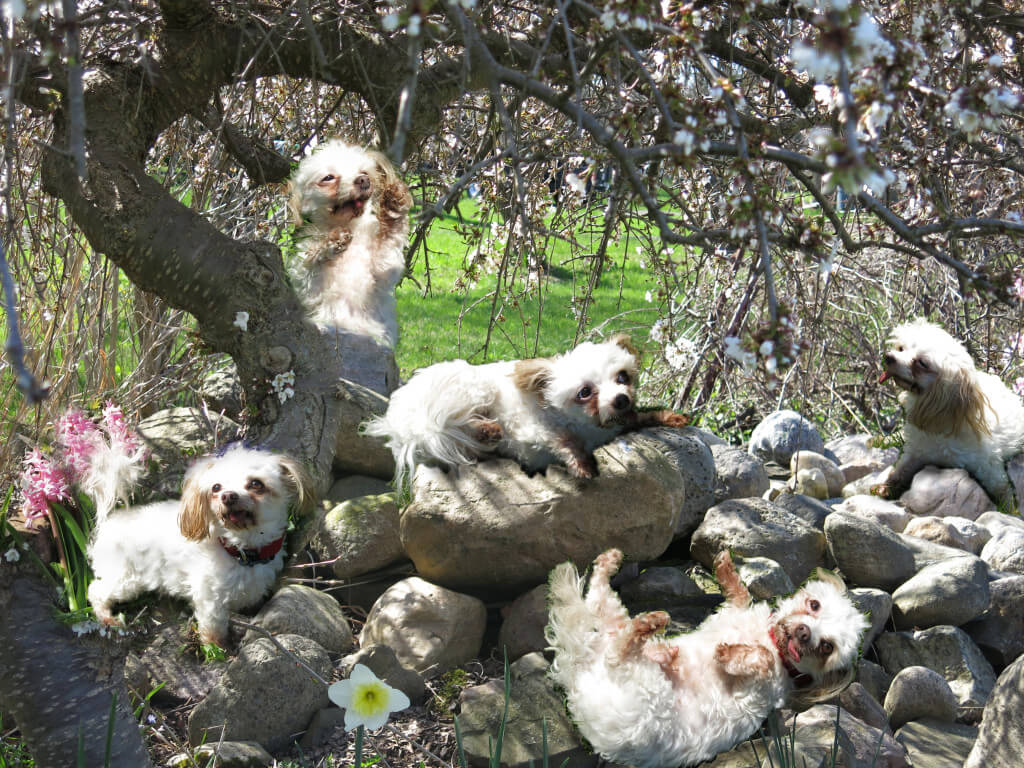 Suki, a Havanese, jumps for treats in front of a pond of frogs in Ithaca, New York.
Suki, a Havanese, jumps for treats in front of a pond of frogs in Ithaca, New York.
I wake up smelling skunk. Will I need to call wildlife control again, I wonder? Then I remember today’s the day I’m supposed to clean out the upstairs closet, prepare the guest room, change the cat litter and finally take down the holiday lights. And I have a homework assignment: Stop-Action Shots.
There’s too much to do. I just want to sleep in this morning and not move. I try to think of one thing about today I can look forward to. Oh yeah. Today’s the day I get to climb into my clumsy fishing waders and weed the pond. Ick.
The cat climbs into bed and walks on top of me to tell me it’s time to feed him. The dog tries to lick my eyes open. She scratches under her right ear. In my head I note: check for ticks. Another thing to take care of. Suddenly my queen-size bed is too crammed and uncomfortable. So I rise to face my day.
Inside the house it reeks of skunk but when I take Suki for her walk, the air outside is filled with the sweet scent of locust trees. There is frog-song and birdsong. The early morning light kisses the pond as the sun tries to push its way through rain clouds. It is suddenly shining and raining at the same time and I wish I could frame it all in a picture. But how does one capture a million frogs, invisible songbirds, what June smells like, the rain and a rising sun in a photograph?
“Experiment with the stop-action settings on your camera,” said my instructor, Kathy Morris, in the photojournalism course I started last week at Tompkins Cortland Community College. “You need good light, a high ISO and a fast shutter speed to see frozen motion in your picture.”
Nothing and no one is moving this Sunday morning at my house. If I could set the camera’s timer, find and set the continuous shooting mode, and gather some enthusiasm to frolic in front of the camera I’d have an action shot. Instead, I bribe the dog. But this option is no easy task. I hold and focus the camera with my right hand. I press the shutter halfway down to keep the focus. With my left hand I pick up a dog-treat and toss it and quickly look back in the viewfinder to catch Suki before she lands. And click the shutter as I toss. It takes twenty tries.
Suki jumps up. Click. The rain falls down. Click. Suki falls back down, her ears fly up. Click. The frogs in the pond poke their heads up and down in the rain. Click. Click. Then comes hours in Photoshop putting all the images together. And finally, the fun part, flattening out the colors of the shadows on Suki and painting in raindrops. In the end I’ve escaped my funk and I have a photo I can use for homework. Maybe I can even use it in my blog post. Okay, so it’s missing the songbirds, a few frogs, and the smells of a morning in June. Just add that to my list of things to do.





